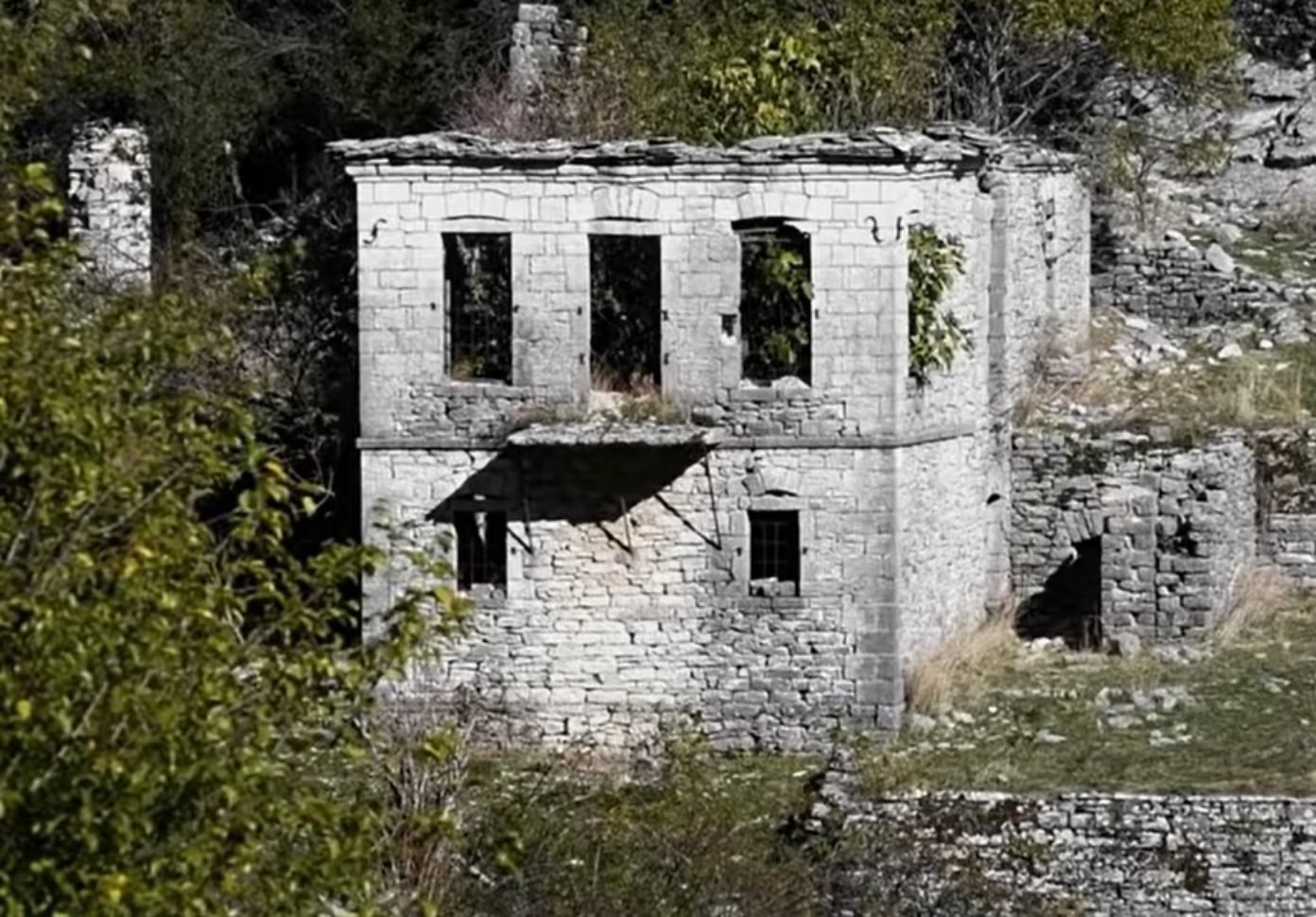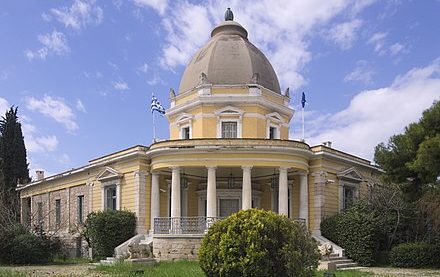
The scariest Greek ghost towns and haunted houses seems a rather appropriate subject at the moment given the rapid approach of Halloween. When one takes into consideration the country’s long and vast history, it is not surprising that there are more than a few of them hidden around the country.
Abandoned towns, villages, cemeteries, and villas seem to be the most haunted. Yet, real or not, they have become the stuff of urban legend—several with their very own horror stories.
Ghost Towns in Greece
Ropoto in Trikala, Thessaly

Ropoto in Thessaly is perhaps one of the least ghostly. It is a small village in Trikala that was established on the slopes of the Karavoula mountain range. At that time, it lay at an altitude of 750 meters. Since then, however, it has descended forty meters lower.
A landslide that occurred in Ropoto in 2012 is the main reason the village is no longer inhabited. It left some of the homes intact—yet completely or partially destroyed the rest.
Homes that weren’t damaged slid further down the slope of the mountain. Likewise, the people who remained in the village lived under poor conditions. Nevertheless, the haunting images of the village have made it a place few dare to visit today.
Stefantyli, the “Atlantis of Crete”
The hamlet of Stefantyli is a place locals refer to as the “Atlantis of Crete,” as it rises during drought and sinks again during floods or heavy rains. When the town sinks after the Aposelemis Dam runs over, all that is visible is the church rooftop and a few of the houses.
This, of course, has lent Stefantyli an ambiance one can only call eerie. The village is only forty-five minutes from Crete’s capital, Heraklion. Yet, the hamlet seems to be from another age and time. Crete has, of course, been in the news numerous times for its flash floods.
Some of the scenes from its last storm this October were just as haunting. With the exception of Stefantyli, however, the island is, nevertheless, also well-known for its comebacks. Much like in Ropoto, nature seems to have overcome the efforts of man to build. Thus, Stefantyli now lies vacant. It can only be described as a ghost town in Greece filled with untold stories of the past.
Paleo Mavronoros in Epirus
The Pogoni municipality is part of the regional unit of Ioannina located within the administrative region of Epirus in northwestern Greece. Paleo Mavronoros is an abandoned mountain village in the regional unit of Ioannina. In Greek, the name means “the Black Mountain.”
Telling is that the first residents gave it that name. Evidently, the reason was its dark and gloomy atmosphere every time a storm hit or the weather turned for the worst.

The fact that it was established as an escape route from Ottoman rule is also interesting. Their luck did not hold, nevertheless. In 1912, the town burned down after the Turks invaded it. Then, fifty years later, it burned down once more.
The residents of Paleo Mavronoros rebuilt their city as best as they could. Yet, many eventually left for the greener pastures of urban cities. The last resident, it is said, left in 1964.
Greek haunted houses
Kontos Mansion in Ano Lehonia Pelion
The Kontos Mansion in Ano Letonia Pelion is supposedly a true house of horrors. The villa belonged to Nikolas Kontos, the Russian ambassador, who built it in 1900.
Urban legend has it, however, that the deaths of his children were strangely suspicious, as they were evidently killed by a lizard that fell into a container of milk. No one is certain whether or not this is true. Yet, the events cannot be denied.
The Nazis took over in 1941, and, during their time at the Kontos Mansion, tortured, maimed, and killed the Greek rebels of the country. Therefore, people now say that the souls of the dead still rest with the Kontos children. Furthermore, it is said that their silhouettes and cries of sorrow can be seen and heard at the mansion when one passes by late at night.
The Old Sanatorium, Mount Parnitha
The old sanatorium on Mount Parnitha is a Greek haunted house as terrifying now as it was apparently useful back then. In came into being in 1917 for people suffering from tuberculosis. Its use as a hospital came to an end, however, in the 1960s.
Since then, it has been re-opened and re-closed more than a few times. A few years after the sanatorium shut its doors, it became the Xenia Hotel for a short period. In the 1980s, it was a school of tourism.
One reason it keeps opening and closing is possibly because the old sanatorium had begun to gain a reputation as a haunted house. Several strange occurrences have reportedly been noted. Most concern paranormal changes in temperature, unusual noises and voices, and even the ghost of a young girl crying for water.
Villa Kazouli in Kifisia Athens
The imposing haunted house known as the Villa Kazouli stands out even among all of the other mansions in Kifissia, one of Athens’ wealthiest northern suburbs. The story goes that an Alexandrian man of business by the name of Nikolas Kazoulis constructed it as a summer residence, which was common amongst Athenians.
Unfortunately, Mr. Kazoulis’ striking house would suffer the same sad fate as that of Mr. Kontos. It became a headquarter for the Nazis in the Second World War. Likewise, there were tales of imprisonment, torture, and death of Greeks during that period.

The house was repurposed in the late 1940s as a hospital. Later on, it became a refuge for victims of the earthquake that struck the Ionian in 1953. Today, it is a listed building. Nevertheless, there circulate hair-raising stories of the voices of those who died on its grounds wailing for justice, peace, and mercy.
Ghost towns and haunted houses are, therefore, not only part of American Halloween culture. The frenzy with paranormal phenomena has also reached the shores of Greece, where the voices of those long forgotten still cry out from the country’s abandoned villages and houses.
See all the latest news from Greece and the world at Greekreporter.com. Contact our newsroom to report an update or send your story, photos and videos. Follow GR on Google News and subscribe here to our daily email!



